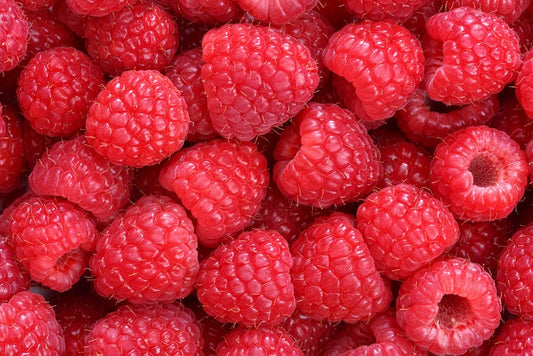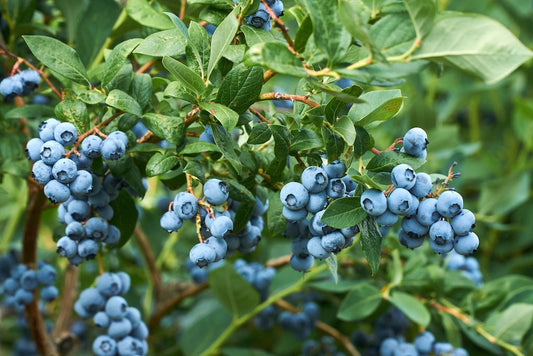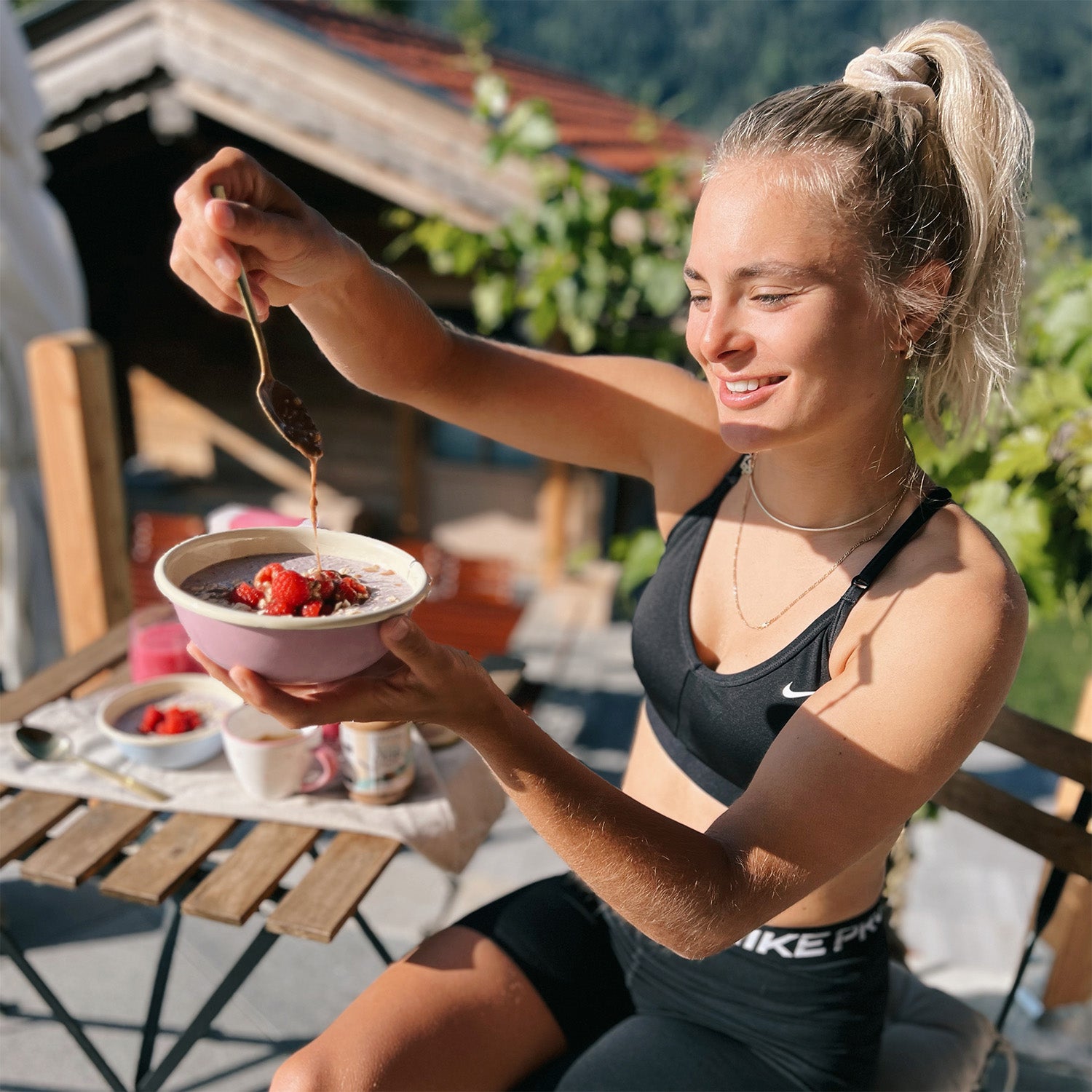There are many opportunities to enjoy outdoor sports during the cold season. Sports such as skiing and cross-country skiing are among the most popular winter sports.
However, you don't have to give up classic summer sports such as jogging, fitness, and cycling, even in wind and weather. But is training in the cold even healthy?
How should you plan your sports nutrition in winter? And what do you need to bear in mind to stay healthy despite the freezing temperatures?
DISCOVER THE VERIVAL SPORTS BREAKFAST
What happens to your body in the cold?
Before we give you specific tips on how to get the most out of outdoor sports in the cold season, we would like to explain how the body reacts to very low temperatures:
The body's first reaction to cold is to constrict the small blood vessels on the surface of the skin. This means that less blood is available at the surface of the body and cannot cool down. It also means that more blood, and therefore heat, is available for the important internal organs. If your body is exposed to very cold temperatures for a long time, muscle coordination and performance decrease.
There is now a risk of injury from the cold. Before any signs of frostbite appear, the body tries to increase blood flow by dilating the blood vessels. This is a last-ditch attempt to raise the temperature at the surface of the skin. If you remain in a very cold environment without protecting yourself, your body temperature will continue to drop and your blood vessels will constrict again. To protect yourself from hypothermia, we have put together some tips for you.
5 tips for outdoor sports in winter
- The right equipment for winter
- Warm-up in cool temperatures
- Breathing and intensity
- Cool-down
- Nutrition
1. The right equipment for winter
To keep your body as warm as possible when doing outdoor sports in cold temperatures, you should wear functional clothing. Unlike cotton clothing, which absorbs moisture and releases it only slowly, functional clothing absorbs moisture and wicks it away to the outside. It also dries faster than cotton clothing. The principle of moisture release only works if the moisture can evaporate on the outside. It therefore makes sense to wear a jacket or vest with this functional effect as the outer layer. Otherwise, moisture would accumulate and cannot be released.
In general, we recommend dressing in layers. Depending on the outside temperature, you should wear several layers. The air released by your body collects between the layers, keeping you warm. The bottom layer should be close-fitting thermal underwear made of synthetic fibers, commonly known as ski underwear.
Your head and hands must be protected with a hat/headband and gloves, as a lot of heat is lost here. If you go skiing or snowboarding, wear a helmet. When you start outdoor training, make sure you are not dressed too warmly. If you sweat more, your clothes will get wet faster and you will be more susceptible to colds.
The right footwear, which you should wear in wet, cold conditions or even in snow, also plays an important role. To keep your feet dry and warm, various sports shoe brands offer their own winter running shoes with water-repellent uppers. If you don't want to buy new sports shoes, you can also wear a second pair of socks. No matter what shoes you use, soles with a grippy tread are essential for maximum traction on snow or black ice and to minimize the risk of injury.
To be clearly visible in the dark winter months, most sports equipment such as jackets, sweaters, pants, and shoes have reflective elements. Headlamps are also a good way to make yourself visible.
2. Warm up in cool temperatures
You should never skip warming up, no matter what time of year it is. Your body always needs a certain amount of preparation before physical activity. On the one hand, it needs to get up to “operating temperature” through a general warm-up (e.g., slow jogging).
On the other hand, your muscles, tendons, ligaments, and joints need so-called mobilization exercises (e.g., rotating your joints) to minimize the risk of injury. Mobilization stimulates blood circulation and prepares your body for the upcoming exertion. It is also a good idea to incorporate coordination exercises (e.g., balance exercises) into your warm-up. You can adapt your warm-up to the sport you are doing. The greater the coordination and speed required, the more you should focus on warming up the joints and muscles that will be under strain.
If you go jogging, cross-country skiing or ice skating, for example, you can start your warm-up at a slow pace and increase the speed after 10-15 minutes. When skiing or snowboarding, the strain on the knees and hips is considerably higher. Therefore, to prevent injuries, you should definitely mobilize the affected joints (e.g., hip circles, knee bends, and circles). When skiing and snowboarding, you should also take it slow and use the first run to get used to the slopes.
If you are wearing several layers of clothing, you can remove one layer after warming up, for example. In any case, make sure you don't get cold while warming up.
3. Breathing and intensity
Once you have put on the appropriate equipment and warmed up, you can start your workout in the fresh air. What do you need to pay attention to during your sporting activity?
If you exercise outdoors at a high intensity, your heart rate will increase and your breathing will become faster and deeper. The cold air you breathe in can be harmful to your lungs, throat, and mouth when temperatures are below freezing. It is therefore advisable to breathe in through your nose, as this gives the air time to warm up in the nasal mucous membranes. This not only warms the air, but also humidifies and filters it. If you breathe in through your mouth, the cold air flows directly into your lungs.
The more accustomed you are to exercising in cold temperatures and the better your fitness level, the better your body will be able to cope. Less fit individuals should take care not to overdo their pace, maintain the correct breathing technique, and slowly acclimatize to the cold conditions.
If the pace is too fast and you breathe in cold air through your mouth, you can damage your health. People with chronic heart or respiratory conditions in particular need to be careful when breathing in icy air, as it can trigger asthma attacks more frequently.
4. Cool down
Many athletes skip the cool down because they don't have enough time or because they don't think it's important. However, it is essential for maintaining good health to spend time cooling down after running or skiing.
By slowing down gradually, you bring your body from an activated state to a calmer state and your heart rate gradually slows down. To release tension from your muscles and ensure supple muscles and greater flexibility, you can incorporate stretching exercises into your cool-down after outdoor sports.
5. Nutrition
To give your body a fit and energetic feeling in the cold season, a warm breakfast is ideal. Warmed-up food not only saves your body energy, but also has a positive effect on your metabolism, increasing activity.
In winter, you can eat more warming ingredients such as oats, oatmeal, oat milk, and spices such as cinnamon, cloves, or nutmeg. A warm breakfast could be a cereal porridge from VERIVAL, such as the delicious Sport Porridge. Protein-rich toppings such as chia seeds, nuts, cashews, berries, and cranberries are particularly good choices.
You won't be as thirsty in winter as you are in summer. Nevertheless, your body needs almost as much fluid in winter as it does in the warmer months. Heated rooms cause the air to become dry, which dehydrates your body. If you exercise, you lose additional fluid. Make sure you drink plenty of unsweetened tea and water.
Exercise in winter – definitely!
In summary, it can be said that exercising in cold temperatures is highly recommended, as you not only increase your endurance and strength, but also strengthen your immune system and well-being. What's more, exercise in the fresh air is simply good for you.
However, there are a few points and precautions you need to bear in mind. If you wear the right clothing and equipment, warm up and cool down properly, pay attention to the right breathing technique and intensity, and adjust your sports nutrition, all that remains is for us to wish you lots of fun and enjoyment with your outdoor workout.
Use our BMI calculator now
At Verival, you can calculate your BMI quickly and easily with our BMI calculator. It doesn't matter whether you want to lose weight, simply do something for your health, or are currently training to build muscle. The body mass index is often the first measurement that shows you whether you have your body weight under control.
























